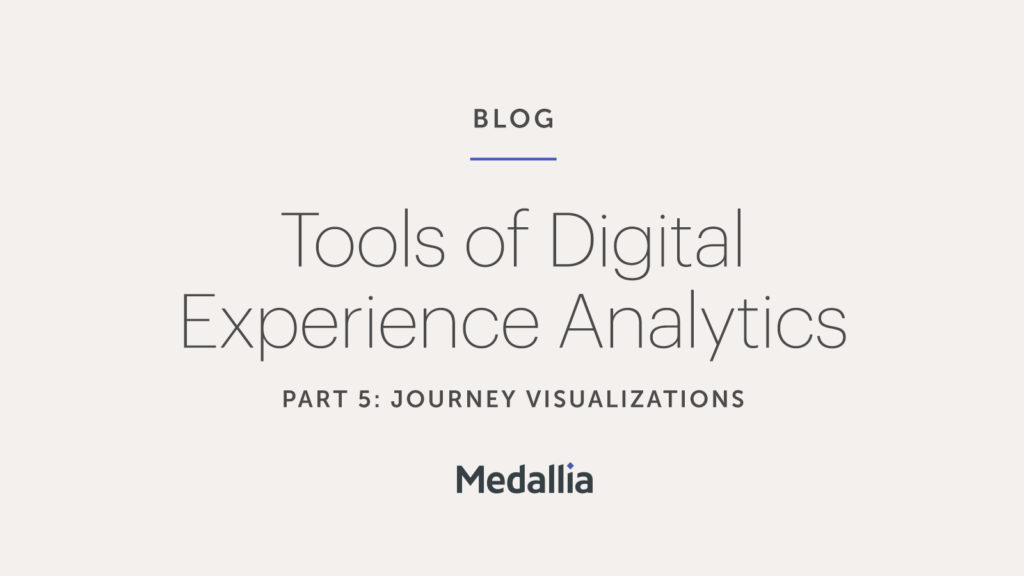There’s an almost never-ending list of factors that impacts a digital experience strategy. However, there are five critical building blocks that can move the needle on a strategy’s potential for success.
With websites and apps becoming decisive touchpoints in the customer journey, your digital experience strategy will be put to the test by nearly every customer. Unfortunately, it’s easy to get lost in the seemingly endless list of variables your digital teams have to control in order to deliver seamless digital experiences that meet customer expectations. And while the details matter, developing a digital experience strategy becomes much simpler when you identify and prioritize the “building blocks” that impact success the most.
Whether creating one from scratch or revamping and optimizing an existing one, the following building blocks (in no particular order) should receive the bulk of your organization’s time and resources when getting started.
1. Digital initiatives directly tied to customer journeys, experiences, and satisfaction
Between the pressures of bottom-line metrics and stakeholder expectations, it’s easy for digital experience strategies to become business-centric instead of customer-centric. But when laying the groundwork of your digital experience strategy, the customer should be at the heart of nearly every decision — not revenue or conversions.
A recent research study conducted by Medallia interviewing 580 organizations about their customer experience maturity confirms the value of a customer-before-business strategy as CX leaders are 26x more likely than laggards to experience revenue growth of 20% or more, and 2.8 times more likely to meet financial targets.
Every decision around websites, apps, and online journeys should have a clear and measurable impact on customer experience and satisfaction. Whether you’re launching a website transformation project, implementing a new digital solution, or tweaking a journey flow, each one must be purposeful in how it impacts your customers. And when digital experiences match or exceed customer expectations, those bottom-line gains are bound to follow.
2. A unifying metric that closely aligns strategy and goals across digital teams
For most organizations, a successful digital experience strategy requires ongoing engagement and alignment from a range of different teams across the business. But if those teams aren’t all on the same page with the same goals, your digital experience strategy may become quite dysfunctional.
To create and maintain that multi-team alignment, it takes a unifying metric — sometimes multiple — like combining experience scores and feedback scores. The metric or metrics you choose should act as a rallying point that removes confusion, enables communication, and clarifies goals across teams. This helps establish team-specific priorities and deliverables that make a tangible impact on the execution of your digital experience strategy.
A prime example of two unifying metrics that are highly suitable for aportfolio, digital experience strategy is Medallia’s Digital Experience Score (DXS®) and Net Promoter Score (NPS®). With DXS® reflecting quality of every online customer experience based on hundreds of behavioral data points and NPS® gathering first-hand voice-of-customer feedback, these two metrics complement one another perfectly. While you’re not limited to these metrics, insights from metrics like these are essential for continually moving the needle on experience.
3. Segmentation that enables distinct and detailed online customer profiles
If you’re treating every online customer the same, your digital experience strategy will miss the mark. Between direct feedback, shared personal information, and observed behavioral data, your digital experience strategy must account for every avenue of insights to develop distinct customer profiles. And that’s where segmentation becomes a fundamental piece of the strategic puzzle.
Segmentation helps digital teams establish customer profiles by identifying and filtering patterns and preferences. From here, you can establish optimal ways to engage each type of customer online — a must-have for personalization. If set up well, segmentation can help businesses create websites that are two to five times more effective than those that provide the same content for all users. And resources that often provide those segmentation capabilities include web and app analytics, voice-of-customer solutions, digital experience analytics, plus journey and experience management tools to name a few.
4. Integrated martech stack that provides instantly actionable insights
Staying on the topic of resources, the state of your martech (marketing technology) stack should not go ignored or treated as an afterthought. There are a few core variables that make a major difference in a digital experience strategy’s potential effectiveness and efficiency.
Before locking in your martech stack, consider these questions:
- Does your journey or experience analysis have any insights gaps or barriers?
- Do your teams have access to the pertinent data they need without inconsistencies?
- Do your teams get real-time feedback and automated alerts that enable instant action?
While access to extensive data is critical to a successful strategy, the ability to act on those insights in real time has become critical — it’s no longer a luxury. Forrester reports that 100% of companies agree that engaging customers proactively by anticipating their needs creates value and will differentiate them in the marketplace. And that’s why real-time feedback from experience management, digital experience analytics, and journey orchestration solutions have become foundational in Martech stacks. Identifying, predicting, and responding to issues with speed is now a key differentiator in delivering high-satisfaction and high-revenue digital experiences.
5. Established processes that enable digital experience optimization
A digital experience strategy cannot be successful if the experiences, journeys, and interactions stay stagnant, or worse, decline. The act of continually improving and innovating digital experiences must be more than an ad-hoc approach that’s led by hunches. It can be easy for teams to make false assumptions about a problem or chase lower-priority opportunities without investigating any further. But your process needs to be data-driven, specific, and purposeful to be effective.
Digital teams should start by identifying known or predictable problems reflected by key data sources like survey feedback, digital experience scores, and or journey-based metrics like conversion and abandonment. From there, the issue should be handled by appropriate teams using experience analytic tools like session replays, heatmaps, and journey visualizations to find the specific issue such as a broken button or page that doesn’t load. From there, it’s a matter of resolving the issue and optimizing that experience as quickly as possible.
Download The Essential Tools of Digital Experience Analytics to discover the place for each tool in your digital experience strategy, and how to get the most out of them to maximize actionable insights.







